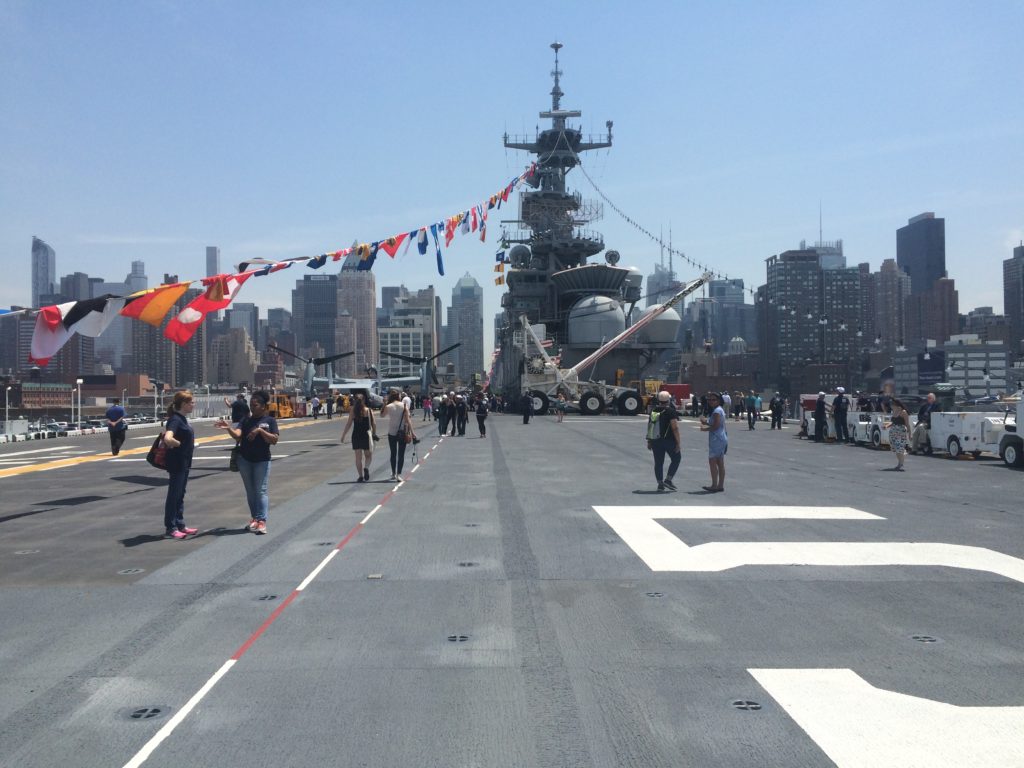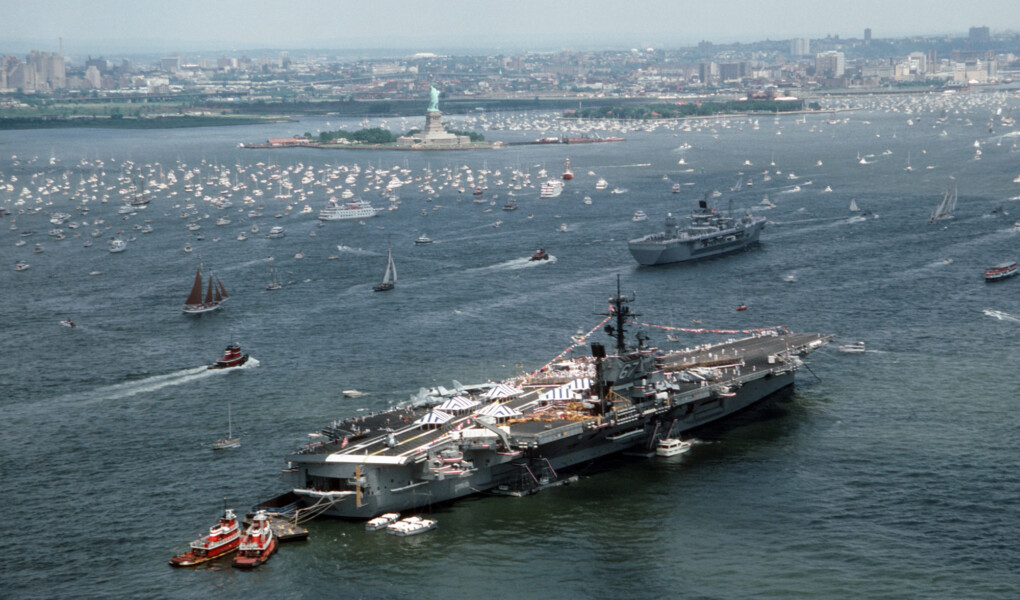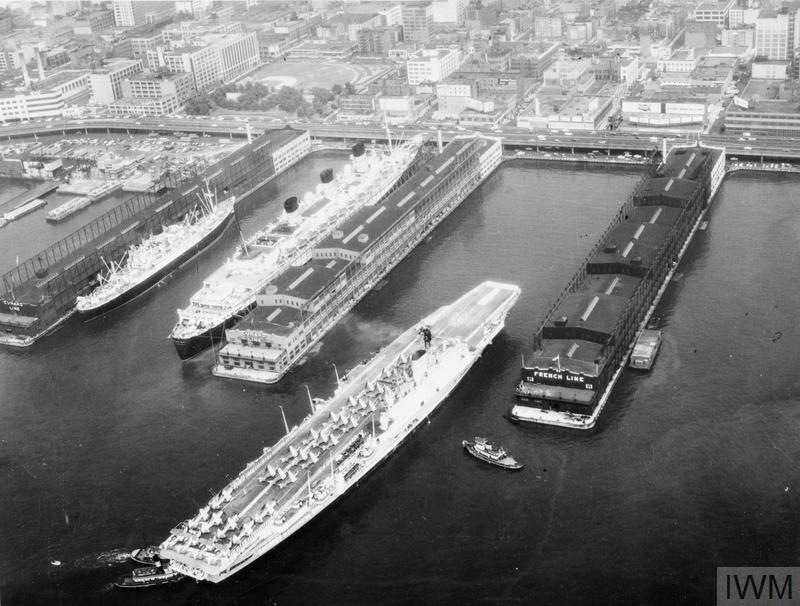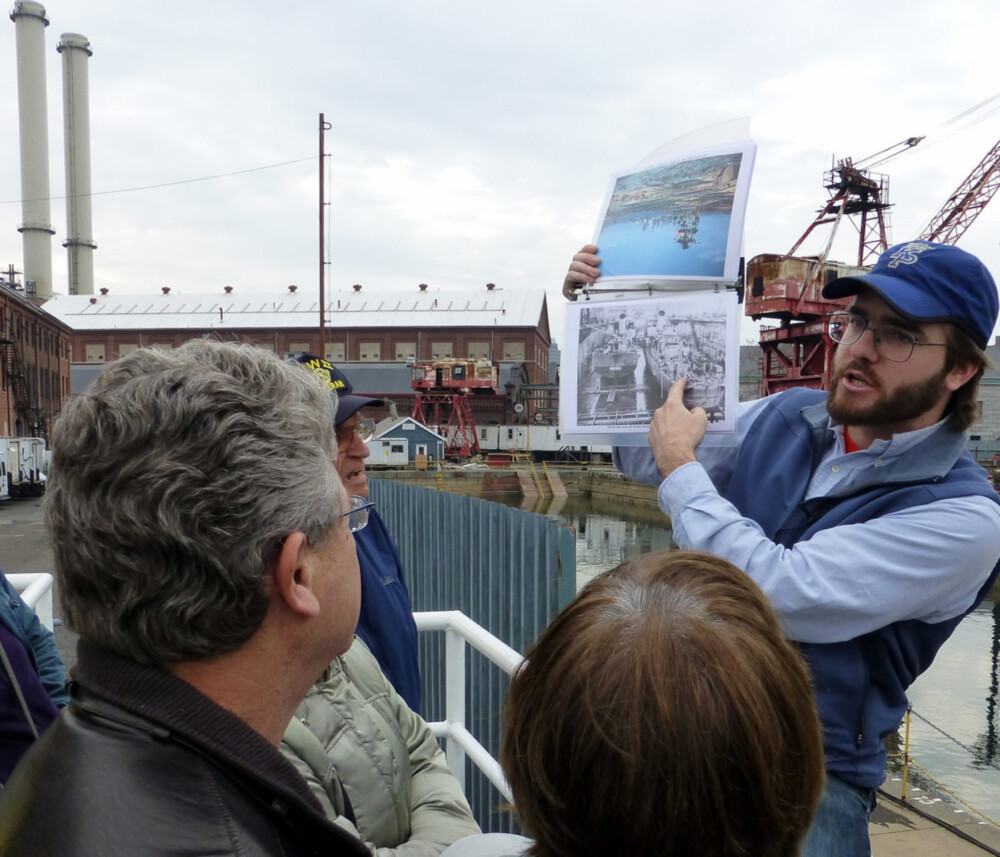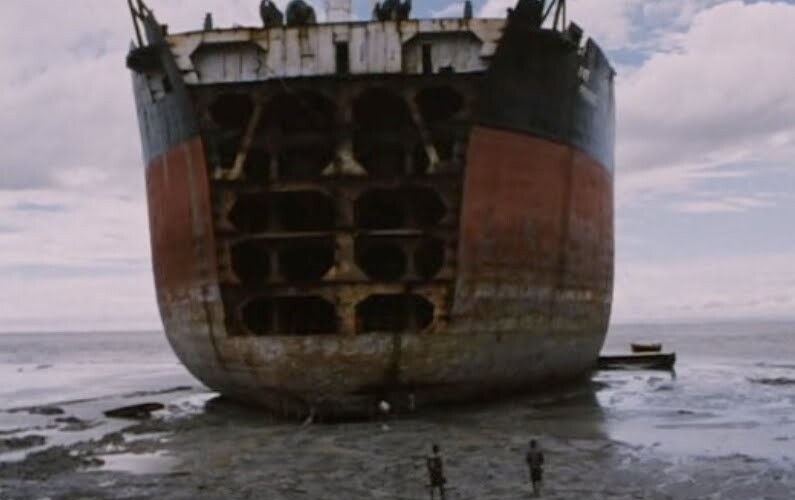Last week, New York City was visited by the flagship of the Royal Navy, HMS Queen Elizabeth. This 65,000-ton carrier has spent several weeks in the US while undergoing flight testing with the F-35B fighter, which will be the primary component of its air wing. The seven-day stopover in New York was mostly for crew R-and-R, though the ship also hosted the Atlantic Future Forum on cybersecurity.
New York City is home to the Intrepid, permanently docked on the Hudson River and home to the Intrepid Sea, Air, and Space Museum, and the city still hosts Fleet Week every year around Memorial Day (with some exceptions), but aircraft carriers have not been part of the festivities for over a decade. Let’s take a look back at some of the floating airfields that have visited the city.
What Is an Aircraft Carrier?
The first aircraft carriers came into service in the just at the end of World War I, and began to mature through the 1920’s. While battleships were once the ultimate symbol of naval superiority, early experiments showed that a carrier’s airplanes could neutralize and destroy naval artillery. World War II would prove this beyond any doubt, and since the war, carriers have taken up that mantle. A floating airfield that can project power over a million square miles of ocean is powerful weapon and symbol of not only military might, but technical expertise, as they are extremely difficult machines to build and operate.
Carriers come in many different shapes and sizes. Originally designed simply as an airstrip to launch and recover airplanes, as those planes have become bigger and more powerful, carriers have had to keep pace. Today the largest and most sophisticated carriers employ a CATOBAR system, which stands for Catapult-Assisted Take-Off, Barrier-Arrested Recovery, which means it can operate airplanes that take off and land horizontally. There are 12 carriers in the world with this system, and 11 of them are American (the French Charles de Gaulle being the other). The Russian, Chinese, and Indian navies employ slightly smaller carriers that use a “ski jump” for take-offs, meaning they can only launch high-thrust fighter aircraft, but they can still recover planes horizontally. Ships like Queen Elizabeth also have a ski jump, as do ships in the Italian, Spanish, Thai, and Australian navies, but they can only recover aircraft vertically, meaning they only carry helicopters, tilt-rotor, or vertical take-off planes, such as the Harrier and F-35B.
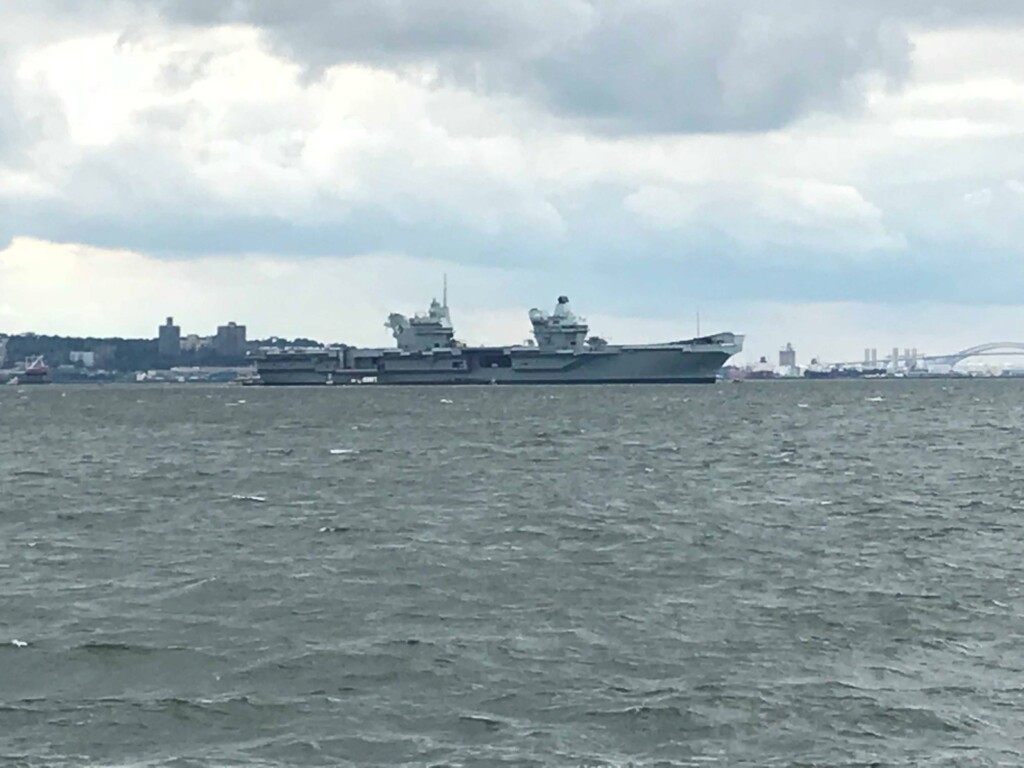
Carriers in World War II
Prior to World War II, the nation’s first aircraft carrier, USS Langley, made more than one visit to New York City, first coming in 1927. One of the largest naval assemblages in New York City was in May 1934, when 86 warships gathered, including all three of the nation’s carriers. Saratoga and Lexington were moored on the Hudson River, while Langley was docked at the Brooklyn Navy Yard for public viewing. On the first day of public visitation, an estimated 125,000 people thronged the visiting ships, and two people drowned, while any 38 were injured or fainted in the somewhat chaotic festivities. Langley and Lexington would be lost in the early days of the coming war, while Saratoga would survive, only to be scuttled at the nuclear tests on Bikini Atoll in 1947.
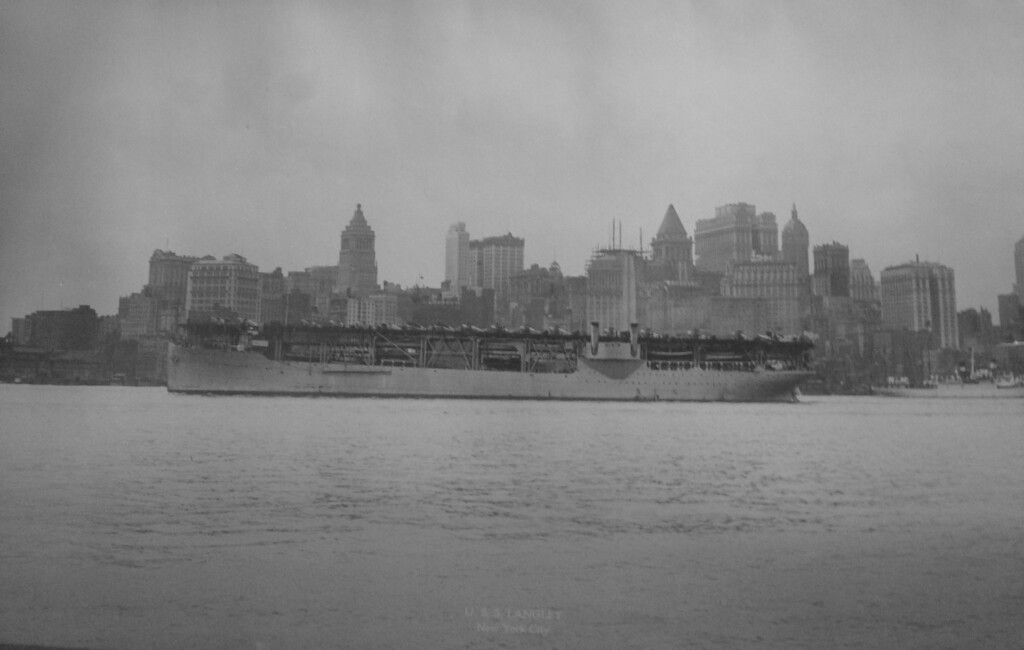
But New York City has not only hosted carriers, but built them. The first constructed in New York Harbor was the USS Bennington, completed at the Brooklyn Navy Yard in 1944. Bennington was the first of five carriers completed or begun during World War II, along with Bon Homme Richard, Franklin D. Roosevelt, Kearsarge, and Oriskany. A sixth carrier, Reprisal, was laid down and more than half complete when the war ended in August 1945, eventually being sold for scrap.
The record for carriers in New York was likely set on October 27, 1945, when the Navy Day review included the partially-completed Oriskany, Kearsarge, and Reprisal, along with the damaged Franklin and newly-commissioned Franklin D. Roosevelt were all at the Yard, while Enterprise and Midway were berthed on the Hudson River.
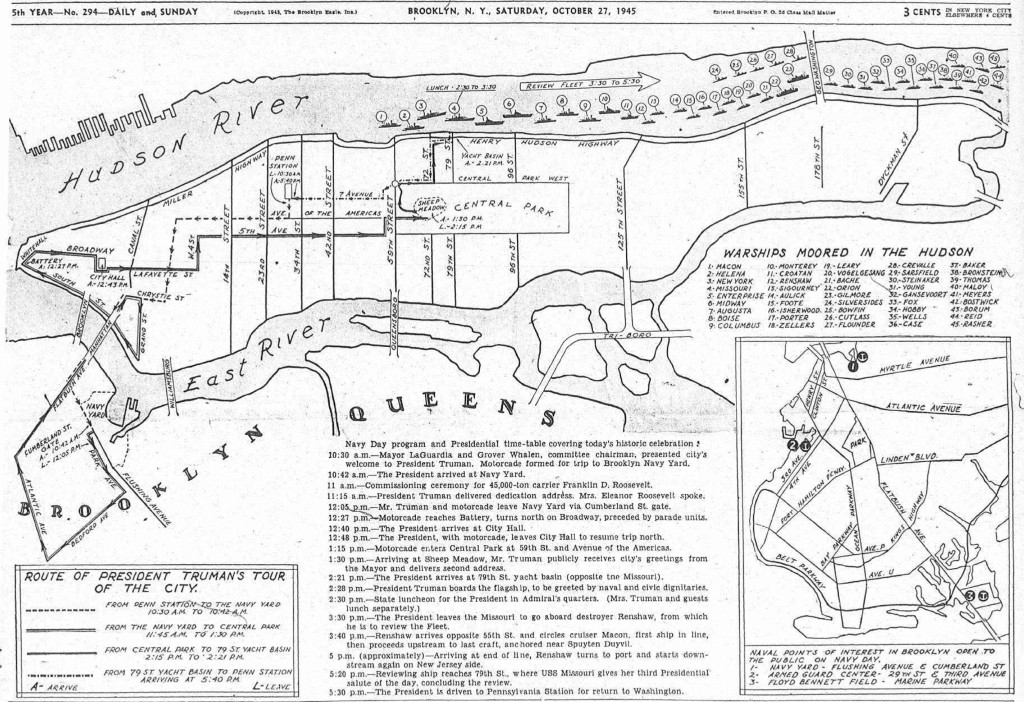
Modernizing the Fleet
Carriers continued to travel up the East River after World War II. America’s fleet carriers had helped win the war in the Pacific, but the dawn of the jet age meant these platforms needed serious upgrades to remain useful. Between 1947 and 1957, nearly all the Essex-class carriers underwent modifications under the SCB-27 and SCB-125 programs, reconfiguring flight decks and launch systems to handle faster, heavier aircraft. The still-incomplete Oriskany was the testbed for the SCB-27 program, followed by Bennington, Hornet, and Ticonderoga at the Brooklyn Navy Yard.
Hornet’s upgrade was interrupted in April 1952, by an incident that took place thousands of miles away, when USS Wasp collided with the destroyer USS Hobson off Gibraltar, killing 176 of Hobson’s sailors. Wasp limped back to New York with a 75-foot section of its bow sheared off. Rather than fabricate a new bow section, the workers at the Brooklyn Navy Yard took Hornet’s bow, which was slated to be replaced in the refit, and transported it by barge to the annex yard in Bayonne, NJ to be attached. The whole operation took just 11 days, and Wasp was back in action.
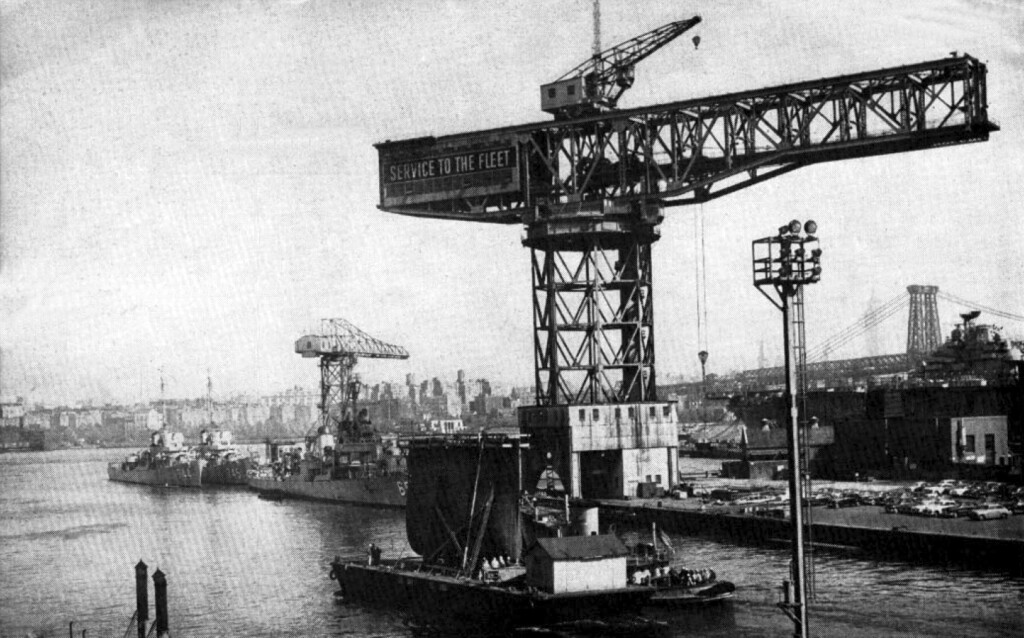
While some ships refit later in the program had new steam catapults installed, Bennington was fitted with an older hydraulic launch system. This would have tragic consequences in May 1954, when a leak in the system caused a fire that killed 104 sailors. The ship was brought back to Brooklyn for repairs and to undergo the next-phase SCB-125 upgrade, later joined by Intrepid.
After 165 years of “service to the fleet,” the final job done by the Brooklyn Navy Yard was the SCB-144 refit of USS Intrepid; the job wasn’t quite completed in time for the Yard’s closure, and the ship had to be floated over to Bayonne to be completed. Incidentally, Intrepid sailed to Bayonne again in 2006, when the museum ship underwent 22 months of refurbishment.
Supercarriers
The largest projects done by the Brooklyn Navy Yard in the post-war period were the construction of three supercarriers, Saratoga, Independence, and Constellation, and each took approximately four years to construct. These 65,000-ton behemoths would dominate the Brooklyn skyline, and their construction and trial was quite a sight. Steam catapults were tested in the East River, requiring the halting of traffic over the Manhattan and Williamsburg Bridges. When the ships finally departed the shipyard, they were outfitted with special folding masts, as they could barely squeeze underneath the East River bridges. And many New Yorkers on both sides of the river got a full view of the worst accident in the Yard’s history, when the Constellation caught fire on December 19, 1960, killing 50 workers.
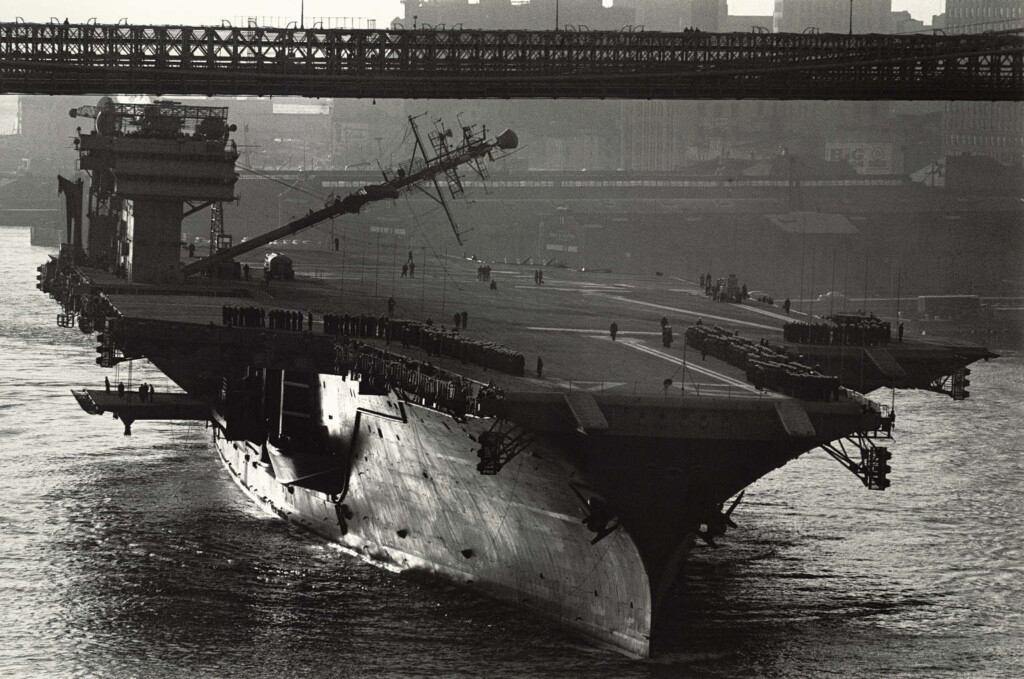
British Carriers Visit
Queen Elizabeth was not the first British carrier to moor in New York Harbor. In June 1957, Ark Royal made a port call, docking at Pier 88 (now the Manhattan Cruise Terminal), following an international naval review in Virginia of 115 ships from 18 different countries. The newly-built carrier was joined by a pair of Italian destroyers, and followed shortly by a visit from the French carrier Bois Belleau, the former US light carrier Belleau Wood, which had been loaned to France to support military operations in Indochina. In July 1959, New York was visited by HMS Victorious, a World War II carrier that had undergone a refit lasting eight years similar to those done to America’s Essex ships.
International Naval Review 1986 and Fleet Week
To mark July 4, 1986, President Reagan held an enormous naval review in New York that included another brand-new British carrier, also named Ark Royal. Also part of the festivities were the French helicopter carrier Jean d’Arc and carrier USS John F. Kennedy, but the star of the show was the recommissioned battleship USS Iowa. The Brooklyn-built ship was slated to become part of a new Surface Action Group that would be based on Staten Island.
This event, which coincided with OpSail 1986 and the centennial of the Statue of Liberty, sparked new interest in naval festivities, which had been held sporadically since 1922 on Navy Day (formerly October 27, now October 13). Fleet Week New York has taken place almost uninterrupted since 1988, with a large fleet carrier visiting almost every year, starting with America, until 2005, when Kennedy was the last to take part in the festivities. We have had some very large ships visit since then which, in other navies, would certainly be considered flagship carriers. In the US Navy, amphibious ships like USS Kearsarge (visited 2006) and USS Bataan (2017) are as large as World War II fleet carriers, but they are designed to carry vertical take-off and landing aircraft.
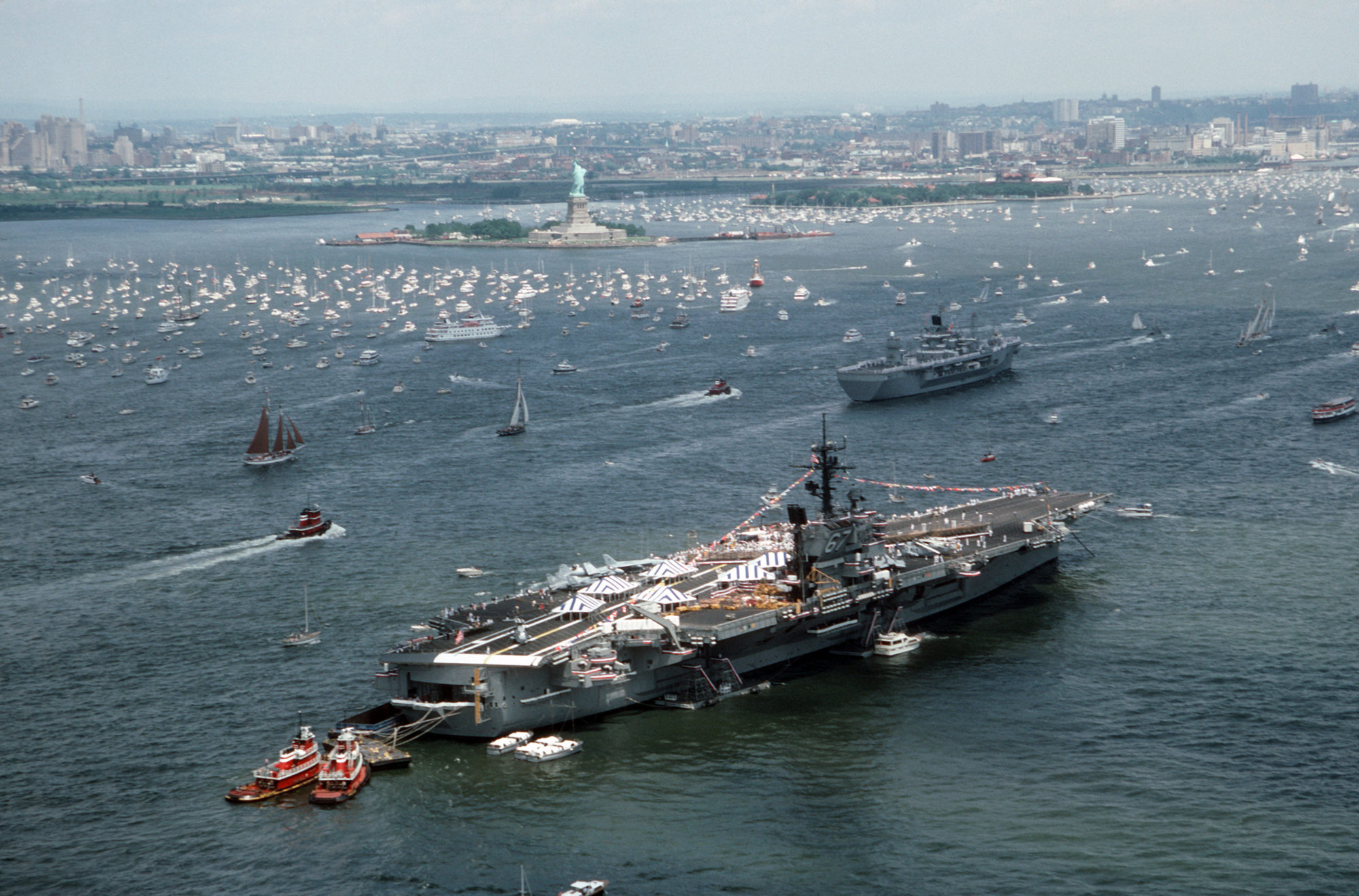
Why No Fleet Carriers Today?
Looking over this list of visiting carriers, one thing that stands out is that none of them are nuclear-powered. Enterprise entered service in 1961, and the US has built 12 nuclear carriers, with four more planned. Since 2009, when Kitty Hawk was decommissioned, the American carrier force has been made up entirely of nuclear-powered vessels, yet none have ever steamed into New York Harbor (though USS George Washington did operate air patrols off the city’s Atlantic coast following the September 11, 2001 terrorist attacks). Why not?
It’s not because we don’t have the berths or facilities for them; these ships are roughly the same size as their conventional counterparts (as they have to fit in the same dry docks). The answer is largely political.
Many nuclear-powered and nuclear-armed ships have visited New York City. The first such vessel in the world, the submarine USS Nautilus, visited New York several times, including after its record-breaking passage under the North Pole sea ice in 1958. The world’s first nuclear merchant ship NS Savannah, made multiple visits starting in 1964. But when the Navy began planning for the Surface Action Group base in Staten Island in 1983, there was a great deal of public outcry against the base, largely based on the fact that the vessels may carry nuclear weapons. None of the vessels intended to be based at Staten Island were nuclear powered, but they could be carrying nuclear weapons, and it was and is the policy of the United States military to never confirm nor deny if a ship is nuclear armed.
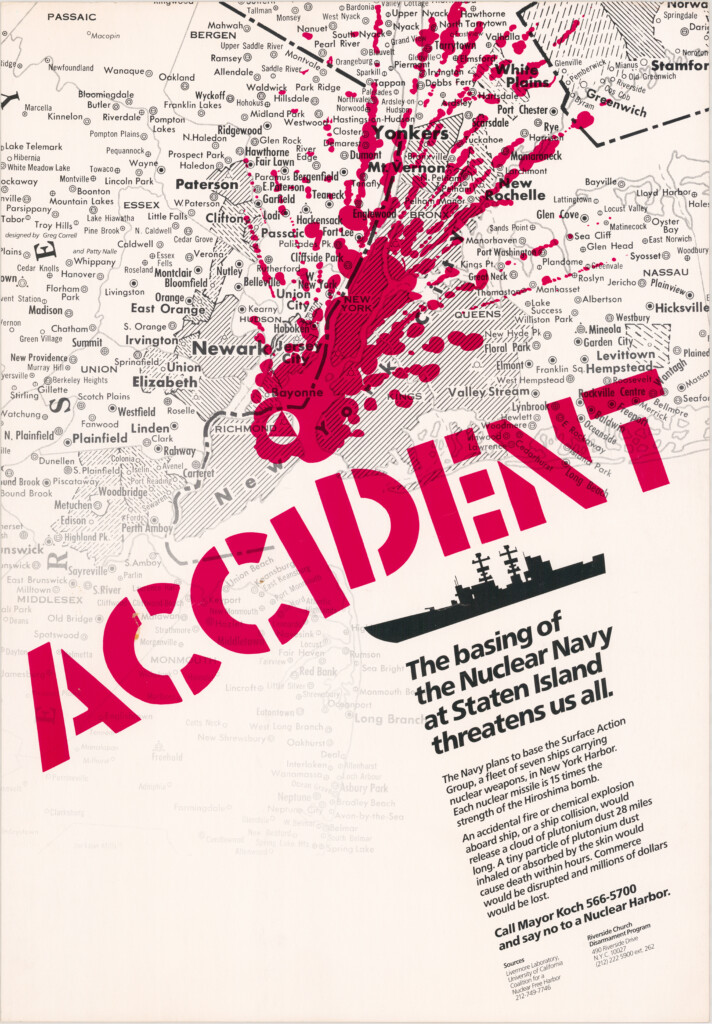
A coalition of Staten Island residents and environmental, peace, and disarmament activists organized after the base plans were announced. A year earlier, one million people had marched on New York for nuclear disarmament, and Staten Island became a focal point of organizations like Riverside Church and SANE (National Committee for Sane Nuclear Policy). In 1984, the New York City Council passed a measure declaring the city a “nuclear-free zone,” banning the weapons. The following year, a ballot initiative could have blocked the transfer of the land for the Navy base to the federal government, but just days before the election, a judge ruled that the measure was unconstitutional, and it was stricken from the ballot.
Since none of these measures had any force of law over the Navy, they proceeded with their plans largely undeterred. What scuttled the Staten Island project was first an explosion in 1989 aboard Iowa that killed 47 sailors and made the Navy question the safety of the battleship refit program, and second the end of the Cold War eliminated the necessity of the military buildup.
So today, the City Council anti-nuclear measure remains on the books, and perhaps out of deference to the public sentiment, or perhaps due to the intense operational demands on these ships, a nuclear-powered carrier has still never made a port call in New York City.
